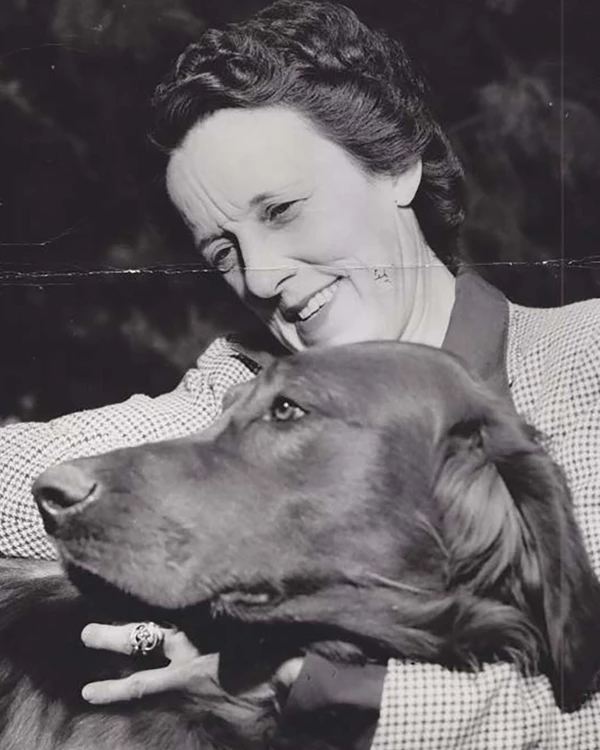Last updated: February 14, 2025
Person
Louise Grantham

Photo courtesy of Judy Palmer, possibly from LA Times
Louise B. Grantham was born in Hillsboro, Ohio in 1900 and spent the first two decades of her life living at home in Ohio before she moved out to California to pursue independence through prospecting in Southern California.
Her first taste of California came from her time at USC in Los Angeles, where she lived in an apartment, potentially with other college students. She enjoyed the entertainment scene in Los Angeles and Hollywood, but also wanted to resolve a family problem. Her father, a druggist back in Ohio, was grubstaking a man supposedly working a mine in the southern Death Valley area, most likely Tecopa, but no money had ever been sent back in return. When she tracked down the man, she discovered he had gambled all of her father’s money away and had no real mining prospects. Louise herself was conned on her first mining venture, and became extremely distrustful from there on out.
Prospecting and mining hooked Louise, however, and she continued to pursue claims around the Warm Springs area of Death Valley for many years. Beginning in the 1930s, Louise became a regular fixture of Warm Springs and Shoshone, prospecting with varying levels of success, until she and her prospecting partner Ernest Huhn claimed the Big Talc and Warm Springs talc mines in 1932-1933. Throughout the 1930s, Louise occupied their Warm Springs camp most weekends and some weekdays with Dorothy A. Ketchin and Nina Bradley. Ernest Huhn stayed at the camp a majority of the time, though it is unclear what the relationship was between these people. Huhn reportedly said Grantham only liked women, as she did not sleep with him. While the integrity of that remark is questionable, recollections of other miners support the idea that Louise did not conform to heterosexual norms.
Louise Grantham was, arguably, a queer woman miner living with “intimate friends” who funded her and cooked for her whenever she was around. The three women operated a functional household while also remaining active participants in LA society, despite the Great Depression. Especially in the early twentieth century, college-educated women embraced the ideology of the New Woman and that independence often led these accomplished women to forgo marriage in favor of lifelong female partnerships. Louise never married, lived with women for decades at a time, and was even sued with Ketchin and Bradley for their shared residence on another person’s land. While we cannot say Louise was lesbian, it is clear that her female friendships were more intimate and consistent than any heterosocial relationships she developed, even with her longtime business partner Huhn.
Demand for talc skyrocketed in World War II when the military required it for paint, making the Warm Springs mines increasingly lucrative. By the late 1950s, all of the Warm Springs talc mines belonged to Louise and were called Big Talc.
Louise’s success did not come without a cost. Bob Thompson, the son of Death Valley figure Panamint Tom, owned the land surrounding a water source in Warm Springs. When Louise first went out to prospect, she rented the land for $10 a month. After initial payment, Louise questioned Thompson’s right to the land and refused to pay him any money. She claimed as much as she could surrounding his property, and ultimately her refusal to compensate Thompson led to an arduous legal battle in the late 1930s, United States v. Grantham, et. al. Grantham wore Thompson down and eventually claimed the land. She kept hold of the Grantham mines until her death in April of 1969. Her brother Bill kept Grantham mines running until selling it to the John-Manville Corporation in 1973.
